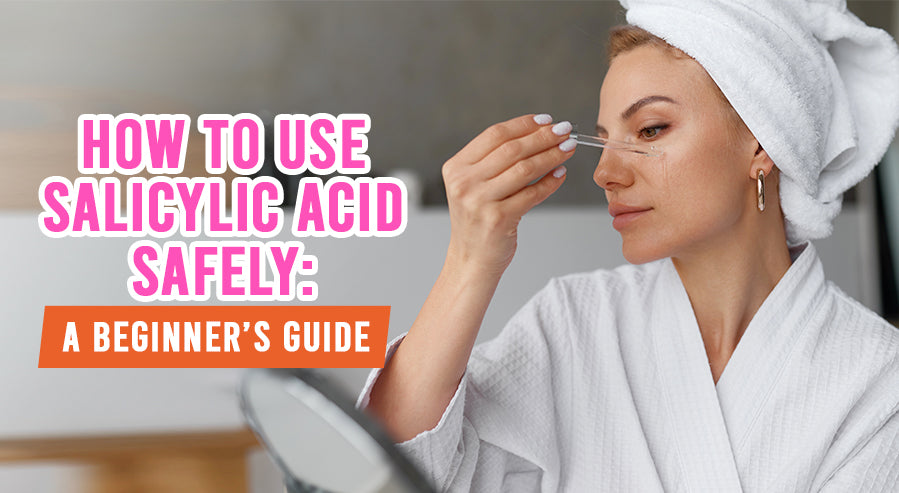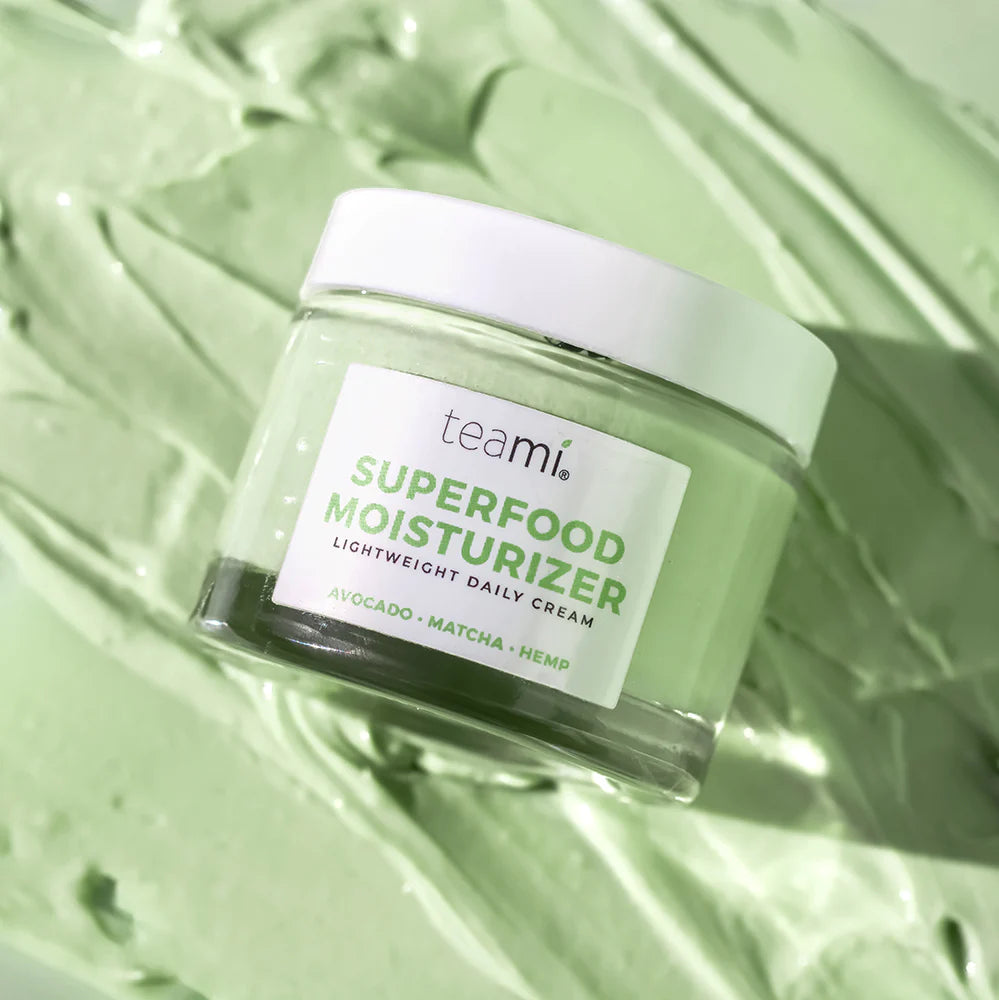How to Use Salicylic Acid Safely: A Beginner’s Guide

Improving our health and appearance can be challenging, especially since the major companies insist the only option is pharmaceutical or surgical correction. While there are situations where medical intervention is the only option, most situations can be mitigated or avoided by making lifestyle changes.
One of the most common tools for an altered lifestyle is a supplement that promotes certain physiological responses. Supplements come in multiple forms, including ingestible and topical products that can improve health and appearance. Some supplements are simple and easily accessible, designed to offer rapid and effective results.
Conversely, others are more complicated and require further research to be used effectively. The complicated nature of these other supplements has led many to misuse their supplements and cause larger issues than they would have fixed.
One of the more complicated supplements available for our use is salicylic acid, which has certain properties that make it a valuable supplement. The problem is that few people know what it is, let alone how to use it properly. As a result, salicylic acid supplements and products are not as widespread, or at least not as well-known, as they could be.
You might not have heard of salicylic acid and, therefore, do not know its benefits for your health and appearance. Learning how to use salicylic acid and what it does can radically improve your selection of supplements.
What is Salicylic Acid?
The world of chemistry is a complicated one full of compounds that the average person might not realize exist. Salicylic acid is more common than you might think among the various compounds found within certain products. Salicylic acid, despite its name, is not a liquid acid but a colorless solid that is a precursor and metabolite for aspirin.
Interestingly, salicylic acid is cultivated from Salix alba, commonly known as the white willow. Willow has been used for medicinal purposes for centuries, potentially going as far back as Pedanius Dioscorides (the Greek "father of pharmacology" from the 6th Century). While the accounts linking willow to Dioscorides are not concrete, the earliest confirmed record of willow being used medicinally was in 1597.
William Turner, an English physician and the "father of English botany," reiterated the use of willow bark as a medicinal tool. Turner alleged that burning willow bark to ashes and steeping it in vinegar turned it into a powerful remedy for corns and other risings on the toes and feet.

Modern research built upon the work of Turner and Dioscorides confirmed the presence of salicylic acid in willow bark due to the presence of salicin in the plant. Salicin is the main source of salicylic acid and can be used to synthesize purer extracts for modern pharmacological use. Because salicylic acid has several benefits for the human body, and because we have known about it for hundreds of years, it is more widespread than most people realize.
Salicylic acid is used in several healthcare and cosmetic products that are readily available from virtually every pharmacy. Some of the most common products that use salicylic acid are readily available, but others are more specific that might not be as common and are less understood by consumers. One of the main questions we have to ask when using an unfamiliar supplement like salicylic acid is: are there special instructions we must follow to use it safely?
What is Salicylic Acid Used For?
Before determining how to use salicylic acid safely, we need to understand what it is used for. Every supplement has a specific purpose, making it valuable to people dealing with specific issues. One of the primary uses for salicylic acid is irrelevant to individual issues and focuses on manufacturing.
Salicylic acid is a preservative that many companies use to keep their products fresh, but it is also an antiseptic used to disinfect things. It also serves as the precursor used to produce a variety of aspirins, meaning it can be used to treat headaches and other pain issues. While this is a leading benefit of salicylic acid, others are more important to the average person than companies trying to produce greater quantities of their product.
The most important benefit of salicylic acid for the average person is its role in skincare, which can be difficult to manage. Our skin is extremely sensitive to contaminants and elements that might damage our complexion. The most common issue concerning our complexion is acne, which generally peaks during puberty but can affect us in adulthood.

Acne can be extremely embarrassing depending on the breakout's severity and can make it difficult for us to take pride in our appearance. Considering acne is a blemish that primarily affects the face, it is usually impossible to hide acne without cosmetic assistance. Nevertheless, hiding acne does not eliminate the core issue causing the breakout and causing you to develop acne. One of the most common causes of acne, even in later life, is when the pores in our skin are clogged with debris and bacteria that inflame the skin.
The situation worsens because pores are also where hair strands grow out, meaning the hair gets trapped inside, allowing the debris to fester. This causes acne to grow since skin cells and sebum gets trapped with other contaminants, promoting whitehead and blackhead acne gestation. While most blackheads are fairly subtle unless large groups are clustered together, whiteheads are significantly more noticeable.
Whiteheads earned their name because they have extremely large white spots on the head of the cyst due to the collection of pus within. The pus is usually created due to the combination of skin cells, sebum, and bacteria mixing in the pore. This can create painful and irritating cysts with the unpleasant urge to pop, though this can further damage your skin.
This is where salicylic acid shines since it can penetrate beneath the top layer of the skin and enter the pores. Despite being a solid, salicylic acid is corrosive and can dissolve organic material. Salicylic acid has a pH value of 2.0, which puts it high on the list of corrosive substances. While it might seem frightening, it is possible to apply salicylic acid to the skin and allow it to penetrate the pores.
The acid will dissolve the skin cells trapped inside and prevent them from contributing to future breakouts. Using salicylic acid to treat acne will not lead to immediate results, and it usually takes around 6 weeks for the acne to start clearing up. If the acid does not yield results after the 6-week mark, you might have to consult a dermatologist to reassess what is causing your acne. If the cause of your acne is the result of contaminants in your pores, salicylic acid should help reduce the issue's severity.
As you might expect, the problem is that applying a supplement based on a corrosive substance is a delicate process that might give you pause. This is understandable since using an acid with a 2.0 pH value on your skin might seem foolhardy. Fortunately, it is possible to use salicylic acid safely since it is often diluted with additional substances and is produced in multiple forms to ensure safe application. Nevertheless, knowing the proper method for using salicylic acid is essential to avoid potential issues and damage the corrosive factor might cause.
How to Use Salicylic Acid Safely
Salicylic acid can play a very beneficial role in cosmetic skincare by dissolving contaminants in the pores and reducing sebum levels for people with excessively oily skin. Unfortunately, salicylic acid has a pH value of 2.0, which is very high in the world of acids. The pH scale is as follows:
- Acidic: Acidic substances include anything with a pH value between 0 and 6, with 0 being the most corrosive and 6 being the least corrosive.
- Base: Base substances include anything with a pH value of 7. A base has no corrosive effects and can reduce the pH of an acid, neutralizing its corrosive features.
- Alkaline: Alkaline substances include anything with a pH value between 8 and 14. Alkaline substances are water-soluble, meaning they dissolve in water.
This scale shows that salicylic acid is very high on the list of acids, making it somewhat hazardous to materials susceptible to corrosion. As a result, applying salicylic acid to your skin can be daunting since you probably do not want to hurt yourself. The good news is that salicylic acid, in limited quantities, can be safely applied to the skin without causing serious injury.

The National Library of Medicine has established guidelines for adults who want to use topical substances that contain salicylic acid. These guidelines prevent the users from damaging their skin so the substance can be used safely. The guidelines by product type are as follows:
- Gels: Gels can have a minimum of 2% salicylic acid and a maximum of 7%. Additionally, you should only use these gels once per day.
- Lotions: Lotions can only have 2% salicylic acid. Additionally, you should only use these lotions between 1 to 3 times per day.
- Ointment: Ointments can only have 3% salicylic acid. Additionally, you can use these ointments as needed.
- Pads: Pads can have a minimum of 0.5% salicylic acid and a maximum of 2%. Additionally, you should only use these pads between 1 to 3 times per day.
- Soap: Soaps can have a minimum of 0.5% salicylic acid and a maximum of 3%. Additionally, you can use these soaps as needed.
- Solutions: Solutions can have a minimum of 0.5% salicylic acid and a maximum of 2%. Additionally, you should only use these solutions between 1 to 3 times per day.
Using these guidelines, you should not have much trouble when dealing with salicylic acid as long as you adhere to the instructions included in the product. It is critical to know how often you can use the product type and how much salicylic acid is supposed to be in it. However, you must also ensure you do not overuse the product during the appropriate sessions. The best option is to use a small amount of the product after washing your face with a mild cleanser. After washing your face, pat your skin dry before applying the acid. The big difference is if you are using a cleanser that contains salicylic acid.
If you are using a cleanser with salicylic acid, wet the part of your skin to which you intend to apply the cleanser. Once wet, take the amount instructed on the bottle and gently rub it into the skin for 10 to 20 seconds. Under no circumstances should you scrub the skin since this can irritate it and cause the acid to damage you further.
Once you have fully lathered the cleanser into your skin, rinse with lukewarm water and pat your skin dry (scrubbing with a towel can cause damage). These instructions will help you take advantage of salicylic acid's benefits for skincare and keep your complexion clear. Unfortunately, one issue remains for you to consider: getting a reliable product.
Finding the Right Blend
Salicylic acid, despite its corrosive nature, is an extremely powerful skincare tool that can help you manage severe cases of acne. Understanding the proper procedure is so important because of its acidic nature. Otherwise, you risk damaging your skin by exposing it to a corrosive agent. Fortunately, most products containing salicylic acid are combinations of other products that reduce the acidic properties enough to prevent it from eating through your skin. As long as the product follows the National Library of Medicine's guidelines, it should be safe for use. Nevertheless, you should ensure any salicylic acid product you acquire comes from a reputable vendor to avoid this issue.

We at Teami have made it our mission to provide natural products that promote health and beauty. We have cultivated a large catalog of skincare products designed to address blemishes and conditions like acne. Among our products is our Gentle Superfood Liquid Cleanser, which contains several compounds that benefit skincare. One of the main ingredients is salicylic acid (within the limits set by the National Library of Medicine). We encourage you to try the product for yourself so you can safely reap the benefits offered by salicylic acid safely. After all, finding the right blend is a Teami effort.
Subscribe to our Newsletter
Subscribe to our newsletter and get 10% off your first purchase
 Instagram
Instagram



